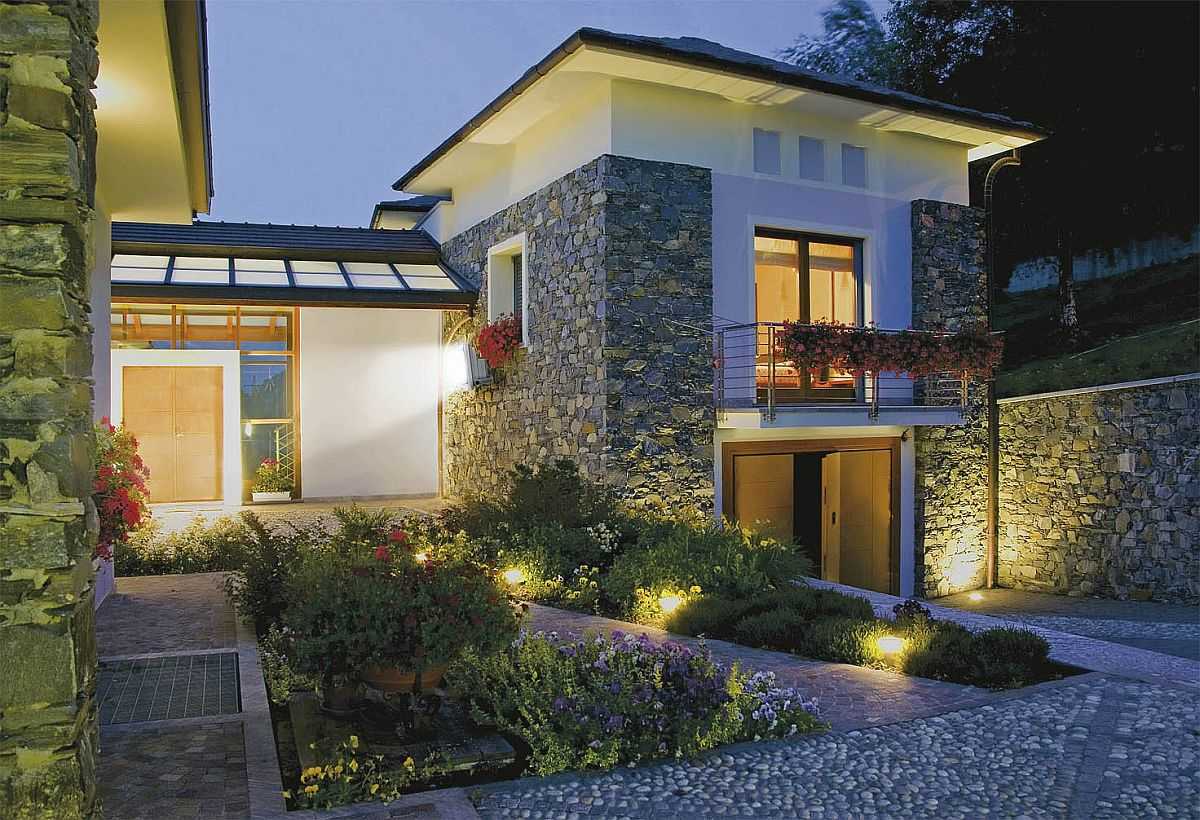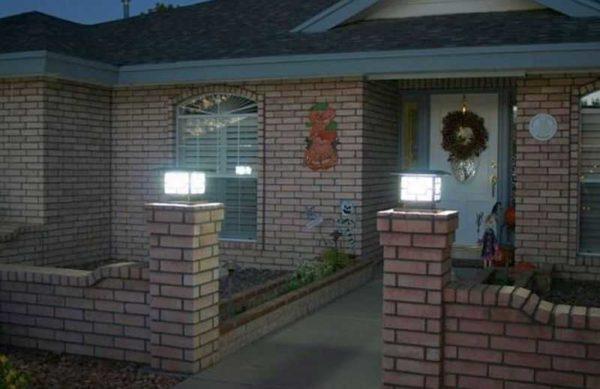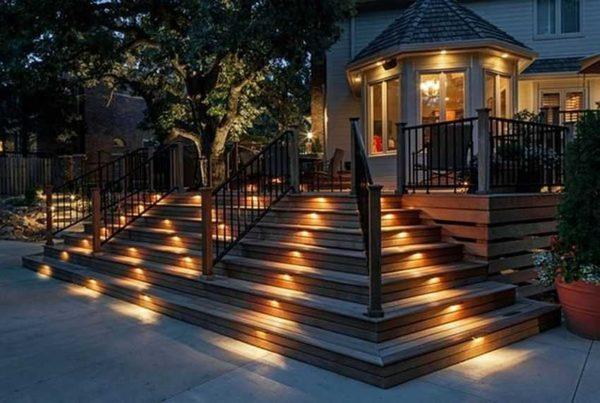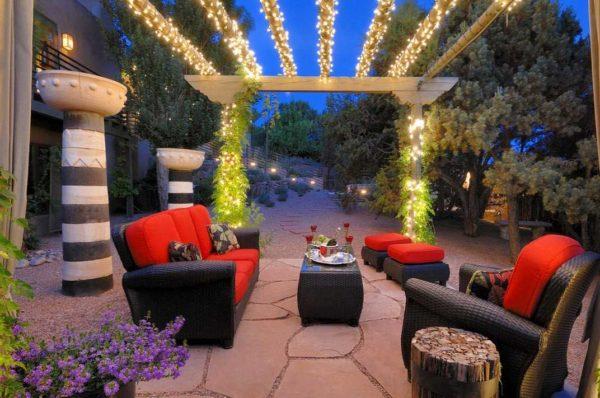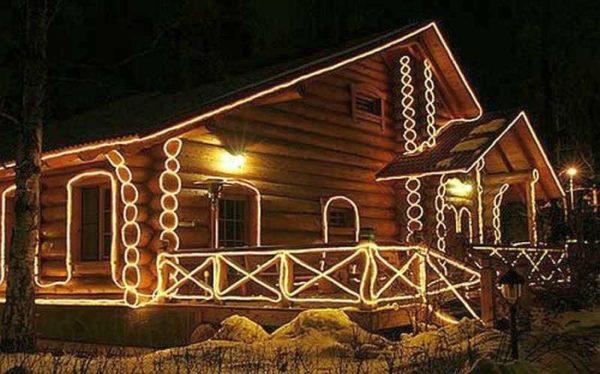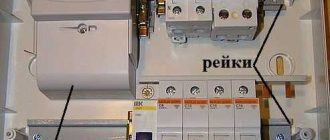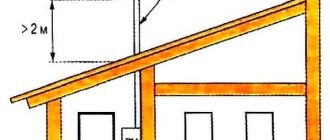Without lighting on the plot near the house can not do without. Even at a dacha far away from home, at least minimal lighting, but there should be. With him somehow calmer and cozier. And street lighting of the house of permanent residence – this is also a way to decorate the site, give it more individuality and in the evening.
Conținutul articolului
Functions and purpose
Lighting of the yard and adjacent territory performs several functions at once:
- Security. On the illuminated territory is less chance to get away with impunity, because intruders try to avoid such areas. For protection put lights near the gate, on the porch, near outbuildings. They are placed at a considerable height – to illuminate a larger area. The peculiarity of street lighting of this type – it burns all dark hours of the day. There is an option to save money – to put motion sensors. With this device, the light turns on only when there is any movement in the sensor area.
- Ensuring the safety of movement. In order not to step on something left on the path in the dark, they are also usually illuminated. It is necessary lighting on stairs, around water bodies. Most often for this purpose, special street lamps on legs of medium height are used. They are installed at some distance from each other on one or both sides of the path. This lighting is switched on until the owners have gone to bed.
- Decorative. To make the yard or garden look no less attractive in the evening than in the daytime, use decorative lighting. It is usually located on an open porch, gazebo, near a pond or fountain, other decorative elements on the site. With such illumination, wall-mounted street lamps, garlands, LED strips, etc. are used. This street lighting works at home only when necessary.
- Festive. To create a festive atmosphere, homes and yards are decorated. Holiday illumination is not mandatory, but such a nice type of lighting.
Usually the lighting on the plot of the house – country or dacha – is complex. There is at least a lantern at the door and gate, a couple of lanterns along the main paths. There can be installed floodlights controlled from the house, if necessary, illuminating the territory. This minimum that provides a normal degree of security and convenience.
Selection of light fixtures
Special dust and moisture protected luminaires should be installed outdoors. The degree of protection of the housing is shown by the safety class. It is indicated by the Latin letters IP and two digits that follow it. The first digit reflects the degree of protection against dust ingress, the second – moisture. The lower the number, the lower the protection. For example, IP 44 has a lower protection class than IP 65. A specific decoding of the meaning of each digit is shown in the photo below.

It is clear that street lighting at home is better to do with fixtures class IP 68, but they cost quite expensive, and their range is not so great. But you will not have any problems with their work – neither during rain, nor during strong winds carrying dust.
Which lamps to use
If we talk about lamps for street lighting, it is best not to use incandescent bulbs, but LED or economy lamps. The best option is LED. With low power consumption, they shine very brightly. For example, a lamp that consumes 7 watts gives out light like a 50-watt incandescent bulb (or 650 lm). At the same time, they do not heat up, so that the plastic parts nearby do not overheat. The operating temperature range of -20°C to +40°C limits the range of application somewhat.
If there is a desire to further reduce the cost of street lighting, you can install solar-powered lights. By the way, these are also light-emitting diode lamps (LED), in the case of which there is a battery. During daylight hours, the battery accumulates energy, which is then used for lighting. Such lights are of different formats – from small ones that are poked along the path, to solid spotlights that can be used to illuminate roads.

In general, street lights on solar panels are different in design and in the way of installation. The simplest options – garden – can simply stick into the ground (pictured left), there are also suspended versions that can be hung from trees, verandahs. There are sealed models that can float in water. Launching such a lamp into the pond is a great solution (second image on the left).
Not so long ago there are models that can be built into a walkway or stairs (right). They cost quite a lot, but if you take into account that the installation costs are minimal (no need to lay cable), and there are no lighting costs at all, then such an investment is extremely profitable.
On/off automation
Despite the fact that the presence of sensors requires additional costs and complicates installation, it is convenient and economical. There are time relays that can turn on and off the street lighting in the house at a preset time. Such systems make sense to install on security and functional lighting. You can also think about installing relays for decorative lighting – also convenient.
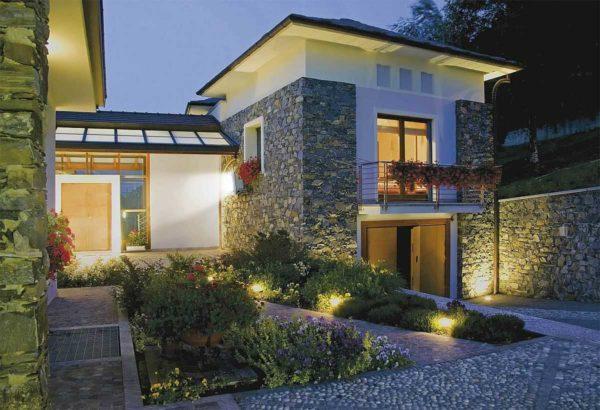
In little-visited places, where you only need to turn on the light when you are there, you can put motion sensors. They can also be part of the security lighting – in the presence of movement will turn on the spotlights, until then not working. It will not be a pleasant surprise. Another thing is that the sensor can work on a dog or other animal, caught in his field of vision. But the security functions will still be more effective.
Another opportunity to automate the street lighting of a private house – to install a photorelay. It reacts to a decrease in the amount of light, including the power circuit of the lamp. Also in automatic mode, the power is turned off – when the sun begins to rise.
Another video on the topic
Wiring and the order of work
First of all, it is necessary to draw up a detailed plan of the illuminated area, which indicates the placement of all lights. Next, it is necessary to develop a route that will connect those light sources that need power (except those that are solar-powered). A separate circuit breaker must be installed in the house switchboard for street lighting. In some cases, several separate power supply lines may be required (e.g. one for lighting the fence and the front yard area, and one for the back yard).
Selecting the cable
It is desirable to lay the cable for power supply of lighting fixtures underground. The minimum laying depth is 80 cm, it is desirable to use armored types of cable. It is allowed to lay VVG cable, but in a protective sheath (special corrugated sleeve or asbestos-cement pipes). Read more about underground cable laying here.
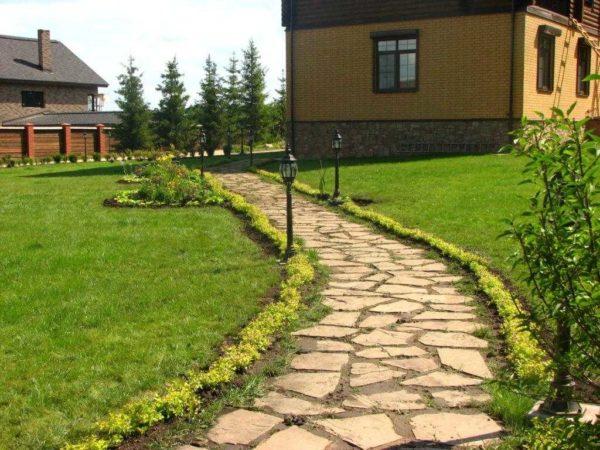
It is also allowed air laying cable for lamps, but it, first, spoils the overall impression, and secondly, it is necessary to find a cable whose sheath is not afraid of ultraviolet light. These are certain types of polyethylene, the sheaths of which significantly raise the cost of cable products. Most often and here use cable VVG, but it requires protection from ultraviolet. It must be laid in cable ducts (if lead along the wall of buildings) or corrugated sleeve. Without such protection in a few years (3-4 years depending on the region) the sheath will crack, which can lead to failure of the entire system.
The choice of cable cross-section is described here, about the ways of connecting wires read here.
Where to put the switches
A few words about choosing where to install switches for street lighting at home. The system can be quite complex – separately pull power to the lights on the fence, separately – for lighting along the paths, another branch – for decorative lighting. But all switches are desirable to concentrate inside the house, and most conveniently – near the front door.
The inconvenience of this scheme is that it is necessary to turn off and turn on the lighting from the house. To make this scheme more convenient can be made with the help of remote control systems. But this is expensive equipment. It is cheaper to install through switches. They allow you to turn on/off the light from two/three points. You can put one inside the house, the second – on the fence, near the garage, etc.

